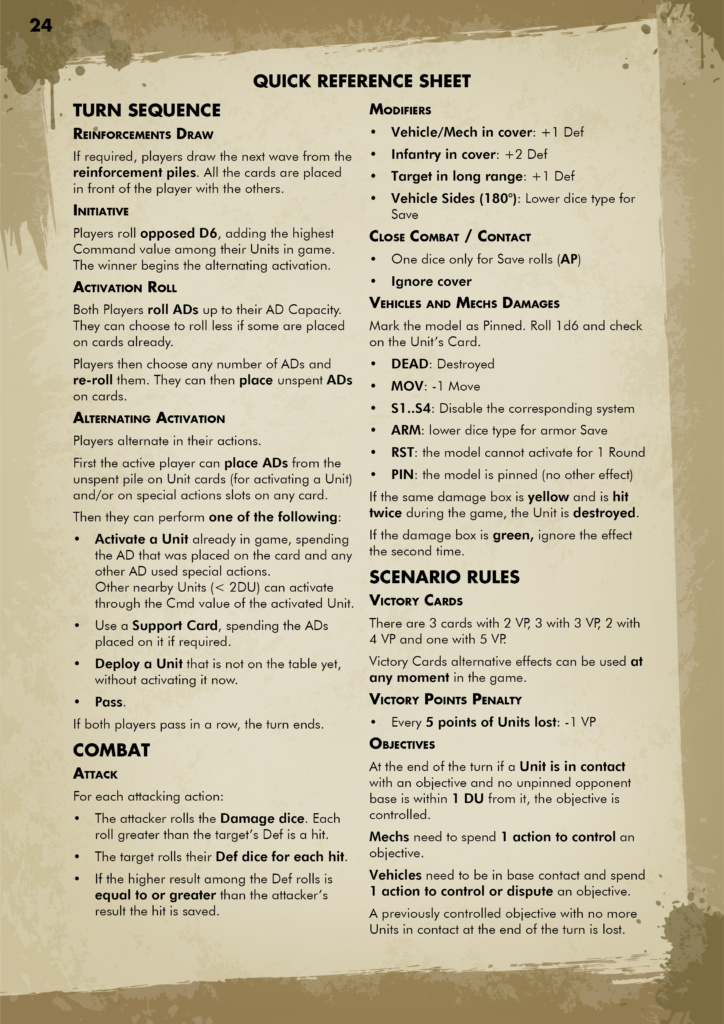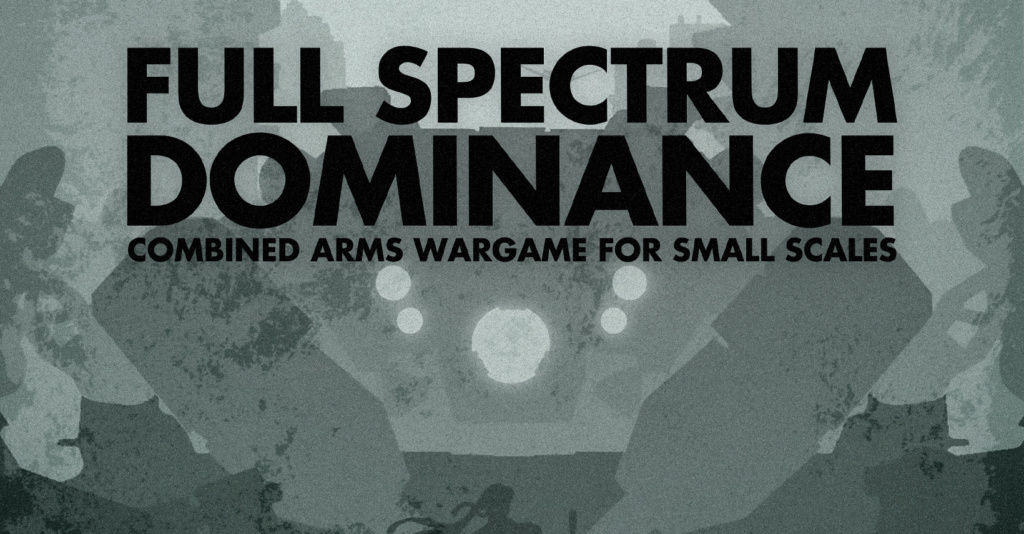
Get the rulebook at: https://www.myminifactory.com/object/3d-print-full-spectrum-dominance-rulebook-262512
Join the FB group to share your gameplays and new ideas: https://www.facebook.com/groups/fullspectrumdominance/
Join the Discord Server: https://discord.gg/smeaCym2pt
Introduction
FSD is a miniature wargame for small-scale miniatures, which encompasses any scale from 3mm to 15mm and over. Vehicles and mechs are handled individually, and infantry troops move in small teams, either as grouped figures or multi-based stands.
Game Size
Figures and terrain in FSD should roughly represent the real numbers and distances of the real battle. Therefore, most of the games are small skirmishes between two platoons (or small companies) in a tight area.
Due to the abstraction level, no exact time or distance scale is provided: things happen until the scenario is completed.
Distances in FSD are measured in Distance Units (DUs), which vary depending on the scale of the miniatures used. A table is generally between 12 x 8 and 12 x 12 DUs. That corresponds to a 2’x3’ table if 1 DU = 3” (for 6mm miniatures) or a 4’x6’ table where 1 DU = 6” (reasonable for 15mm miniatures).
As long as the value of 1 DU is agreed upon, it is absolutely fine to change it at will (and possibly use the metric system as well).
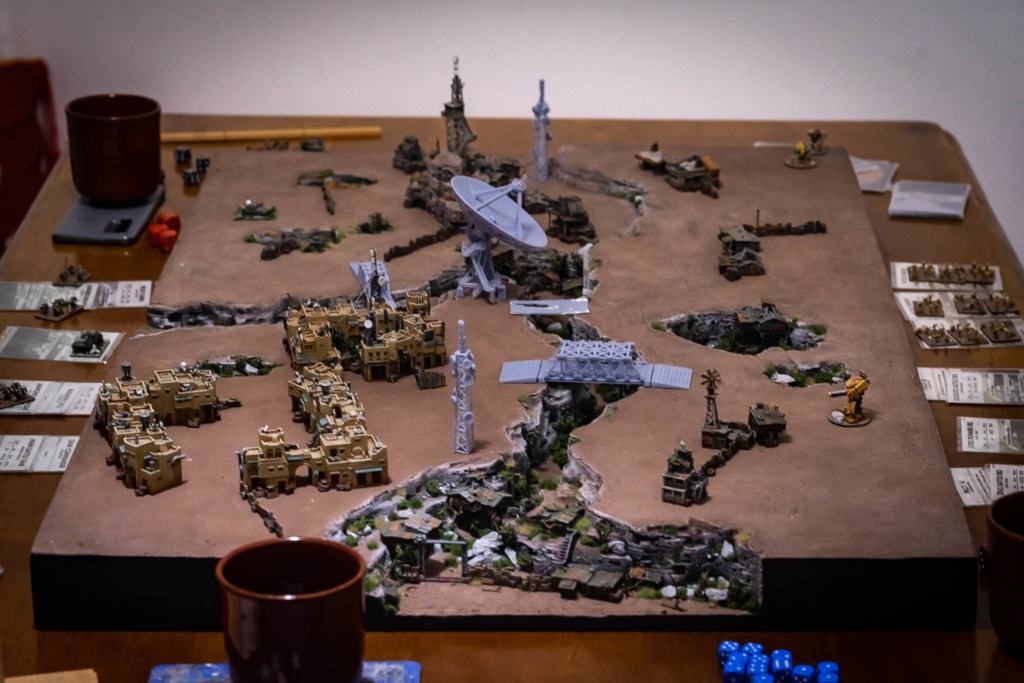
For a 15mm game a more standard 4 x 6 feet table would be recommended, or something in between, scaling the DUs accordingly.
Units and Cards
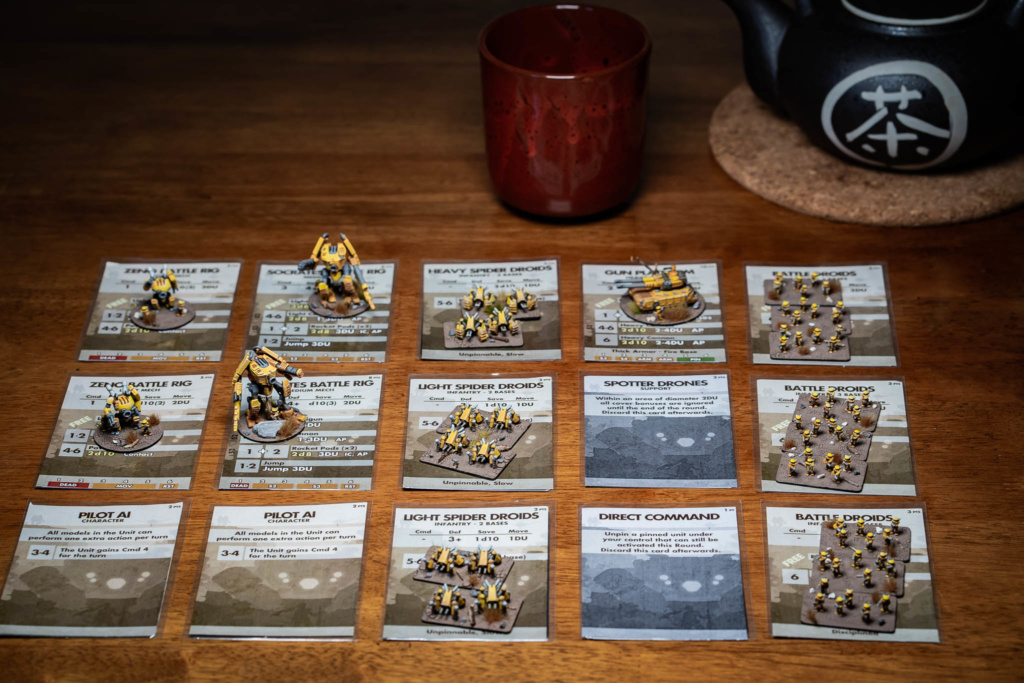
There are three types of Units: Infantry, Mech and Vehicles.
Units can be composed of one or more bases (mostly Infantry), and are represented by a card which the controlling player should keep on their side of the table.
Players create their force from a selection of cards, representing Units, Support abilities and Characters that can be assigned to Units.
The use of cards is not purely cosmetic: parts of the force will start the game in reserve, and drawing from the reinforcements deck is an important part of the game dynamics.
During the game the cards are on the table (representing “available” resources deployed or ready to be deployed) or in one of the reinforcement piles.
Units Caracteristics
Each Unit card lists four characteristics:
- Command (Cmd): allows units to activate in coordinated groups.
- Defense: the threshold to hit the Unit with an attack.
- Save: the armor save rolls to cancel hits.
- Movement (Move): The movement (in DUs) the Unit can perform in one action.
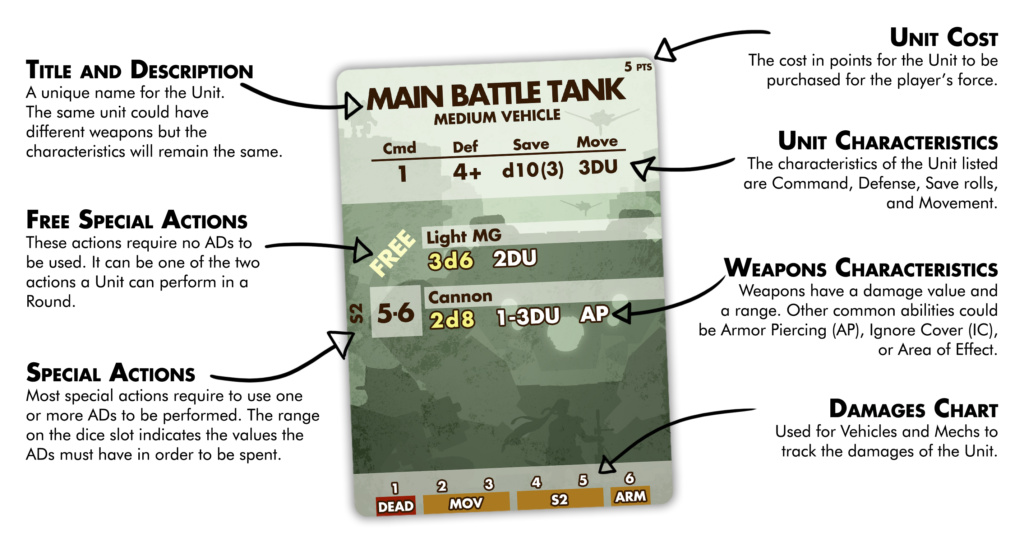
The Game Round
A Round is a game period where all players are able to use their Units and Support Cards to perform functions.
Rounds are made up of the six phases (listed on page 5). During the Alternating Activations phase players alternates turns where each player may activate a Unit (or more than one if the activated Unit has a command value), play a Support Card or deploy new Units from the reserve into play.
Objectives in scenarios are always considered at the end of each Round.
Activation Dice (ADs)
Players use six-sided Activation Dice (ADs) to activate Units, perform Units’ special actions, and to activate Support cards.
Each player’s force for a certain scenario has the following stats:
- AD Pool: The number of ADs available to them throughout the game. With the standard AD Pool of 12, each player requires 12 six-sided ADs.
- AD Capacity: The maximum number of ADs they can roll and put in their Unspent pile at the end of the Activation Dice Roll phase.
ADs represent the limited choices players have each Round, and will be spent to activate Units. They are also necessary for most special actions from Units and Support Cards which have AD slots on them.
The value rolled on each AD matters: Whenever a slot on a card indicates a number or a numeric range (such as 4-6, 1-2, or 1) only ADs with such results can be used for it.
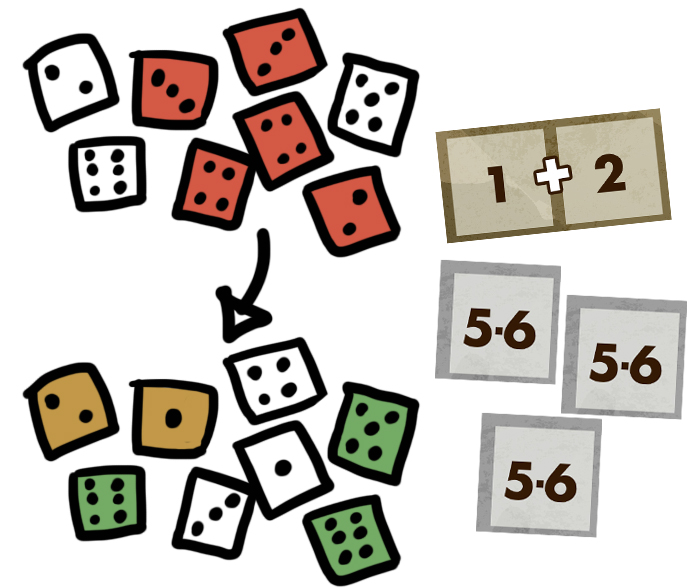
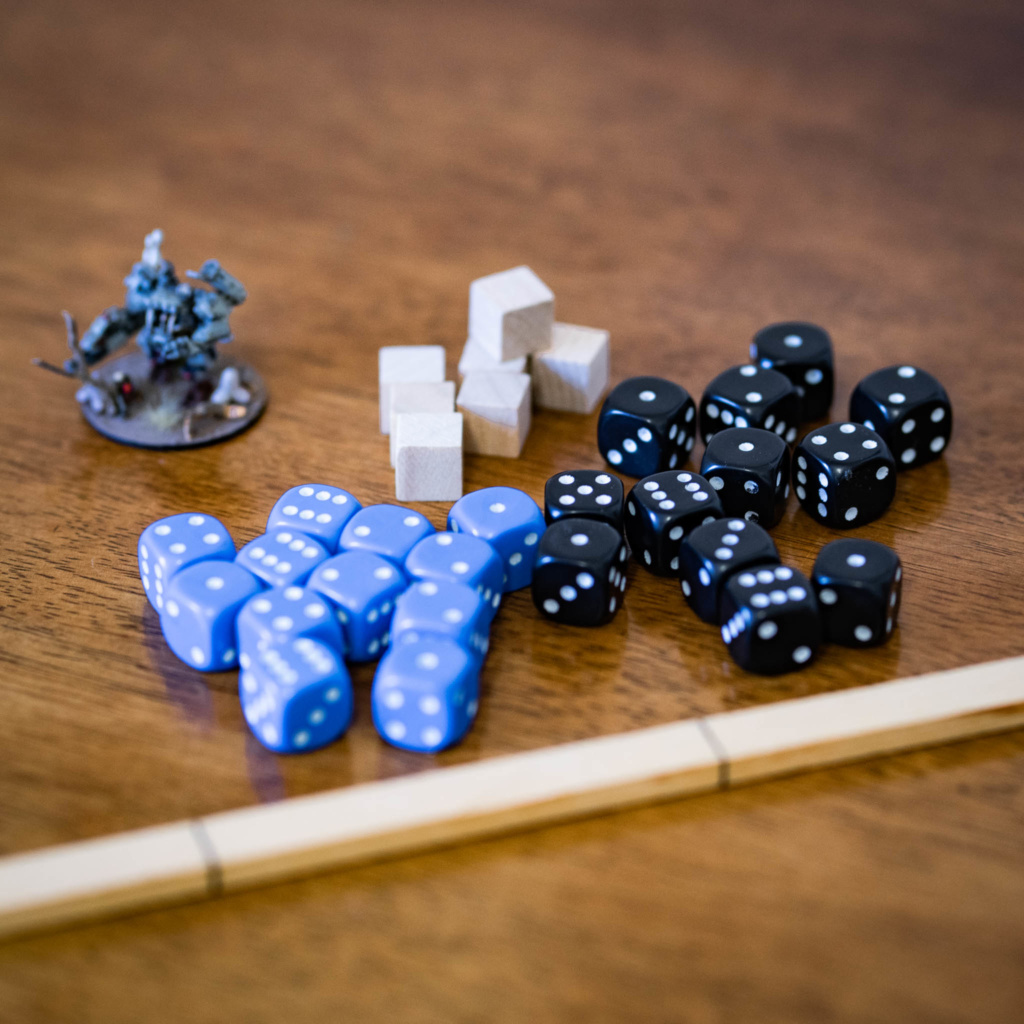
Some ADs are rolled at the beginning of each Round by both players and those will be used in the alternating turns before the end of the Round. If some are remaining at the end of a Round they can be left on cards for the next. However, the AD Pool is limited, and players might end up without enough ADs to roll!
We strongly recommend using colored dice for ADs, so that you won’t accidentally roll them as regular D6s during combat.
Combat Dice
Players will also require a few (half a dozen) d6, d8, d10 and d12 which will be used to determine the outcome of combat.
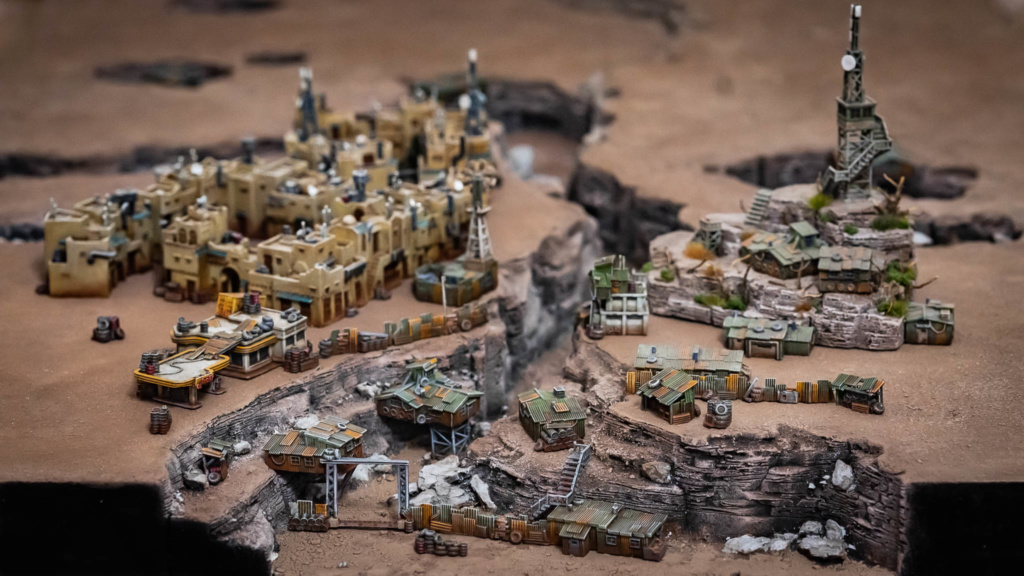
Dice Roll Conventions
Many weapons roll more than one die when used: a weapon with 3d8 of damage will roll three eight-sided dice. Each die roll is treated individually (not added together) and could lead to one damage to the target Unit.
In some cases (such as defense save rolls) several dice are rolled but only the highest result is used. A number between parentheses indicates how many dice should be rolled. For example, a tank with armor d10(2) will roll two ten-sided dice and choose the higher value.
When dice are reduced or increased by one category, replace the die with one of a lower or higher number of faces. For example, a d8 can be reduced to d6 or increased to d10. d6s cannot be reduced and d12 cannot be increased.
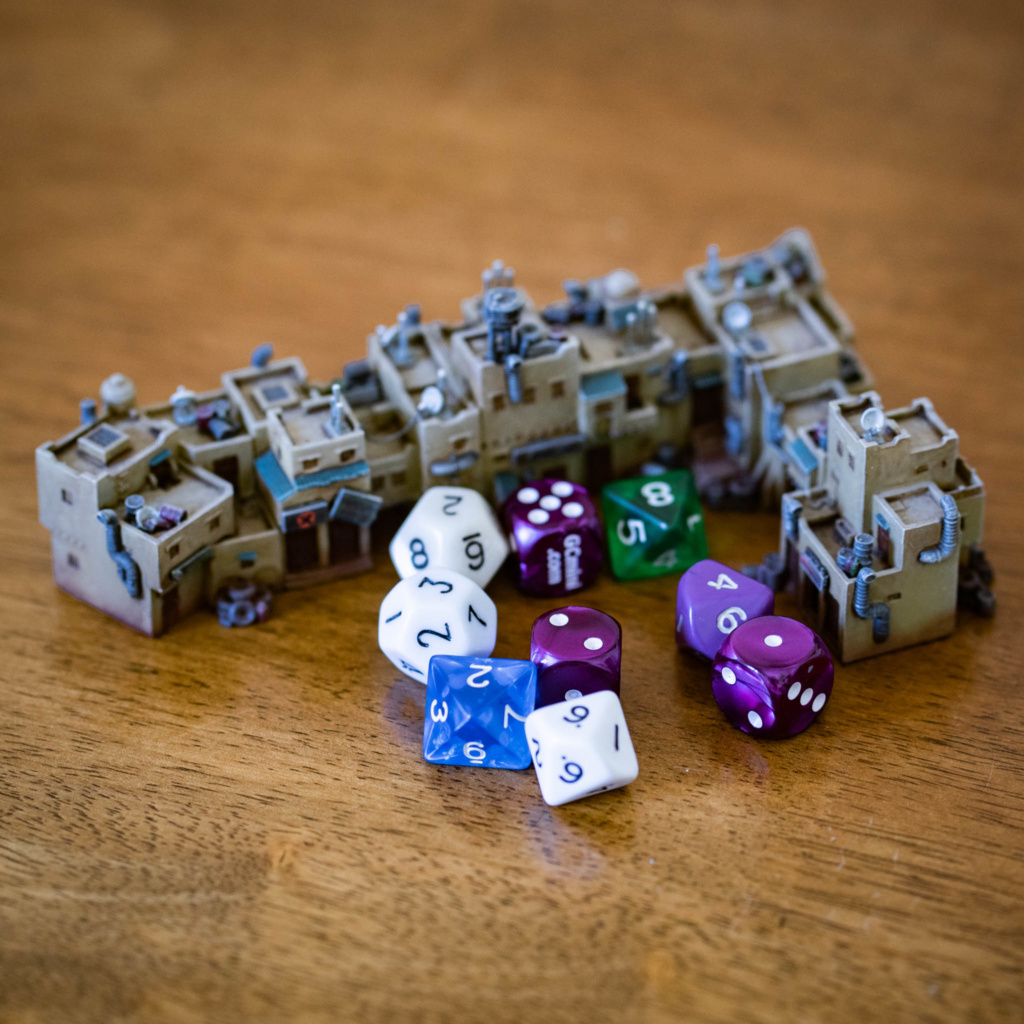

Scenarios
Battles in FSD are organized in scenarios. Each will present starting conditions for the table, point limitations for the factions, and other necessary boundaries.
Scenarios are essential to create a driving force in the game, pushing towards the dynamics that the players are looking for in the game.
Victory cards also provide players with an incomplete view of how the game is going: each card contains a number of Victory Points (which determine the winner of the scenario) and once received are kept hidden from the opponents, so players won’t have certainty of the result of the battle until the end of the scenario when all the cards are revealed.
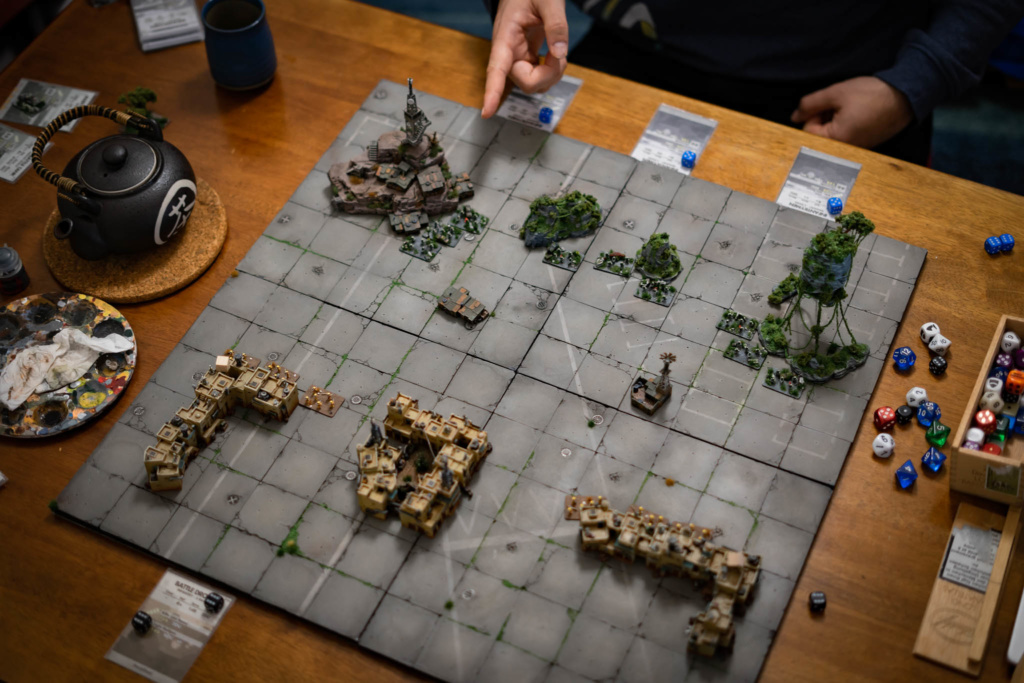
Battle Setup
In most cases, each scenario will indicate the portion of the players’ armies that will start in reserve. Both players then secretly choose which of their cards will begin in reserve and in what order. Reserve cards are then placed to the side of the gaming area.
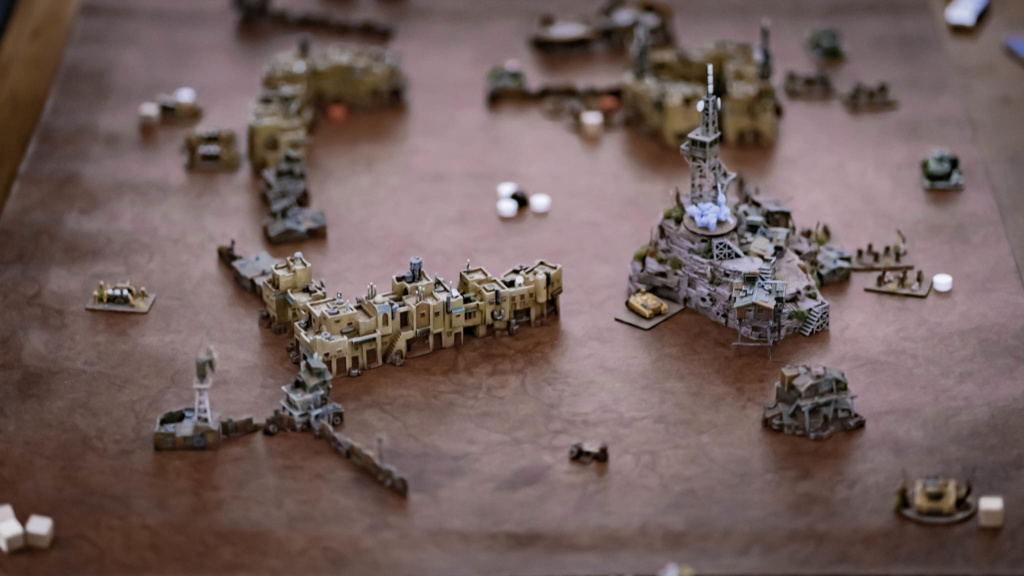
Choosing the order of the waves of cards in reserve is very important for a battle strategy: players must anticipate when and where reinforcement Units will be needed.
The remaining cards are placed face-up on the players’ sides of the table. Players then alternate placing one of their Units at a time in the deployment area described in the scenario.
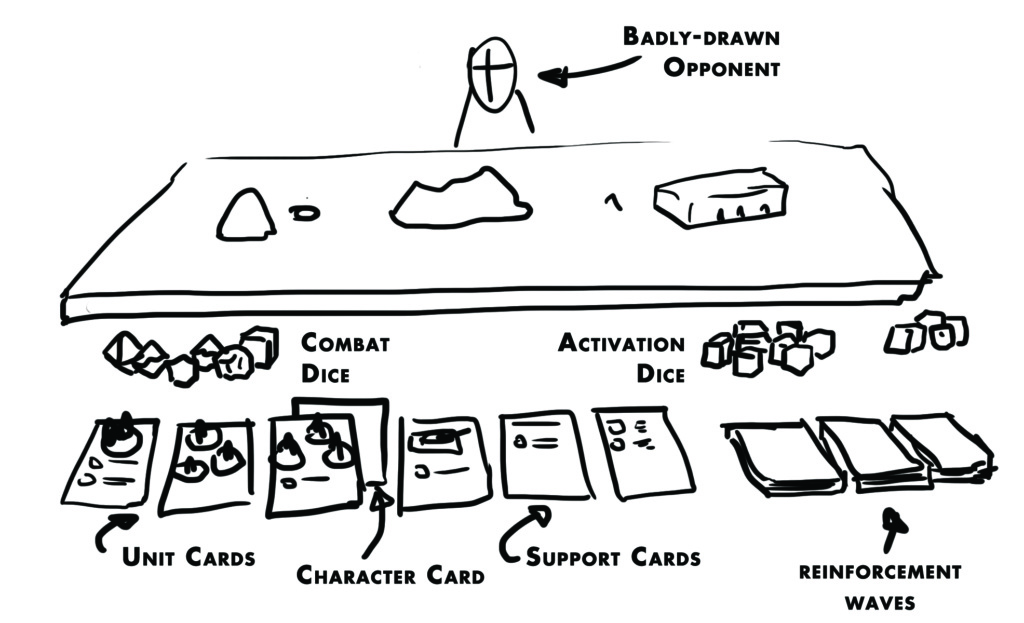
Factions
Factions in FSD have their peculiar flavour, while sharing a core of Units among them to guarantee balance and to simplify the warband creation.
As soon as a new list is tested enough it is added to the paragraphs below.
The Enlisted
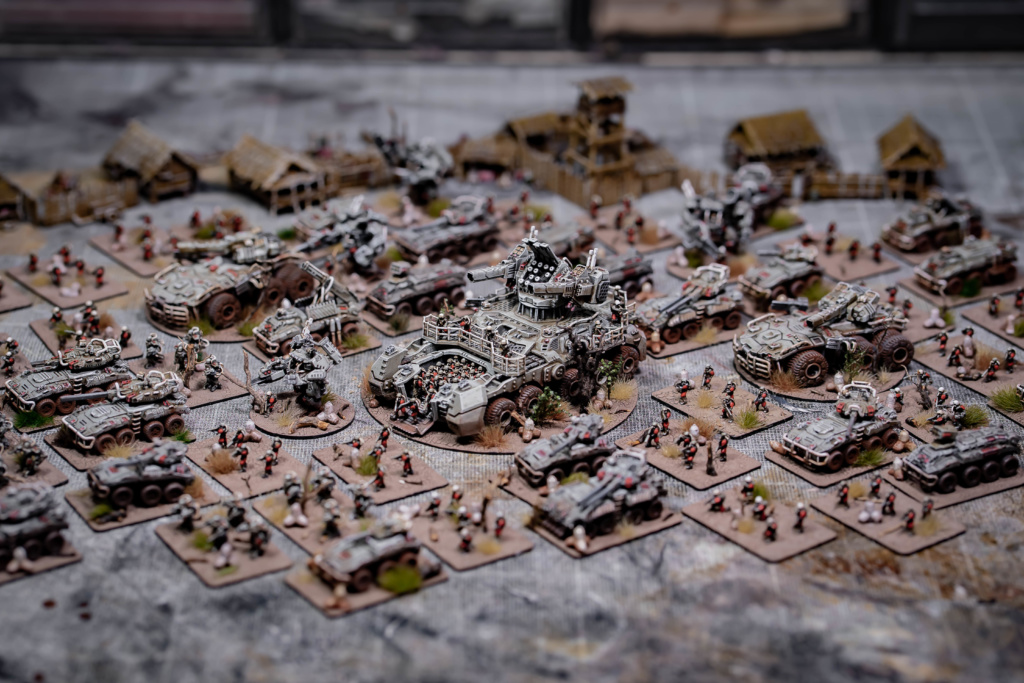
The Tech

Quick Reference Sheet

